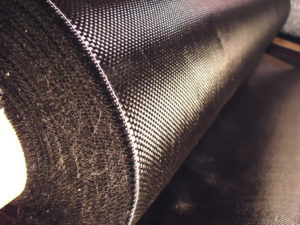What will drive down the cost to a more acceptable level?
 Overcoming the Cost Barrier Depends on Further Development. In December 2009, the U.S. government earmarked funds to ORNL to find the answer. Through the American Recovery and Reinvestment Act, the DOE allocated $34.7 million to establish the Carbon Fiber Center at ORNL. The project will further the research, development, and commercialization of low-cost carbon fiber.
Overcoming the Cost Barrier Depends on Further Development. In December 2009, the U.S. government earmarked funds to ORNL to find the answer. Through the American Recovery and Reinvestment Act, the DOE allocated $34.7 million to establish the Carbon Fiber Center at ORNL. The project will further the research, development, and commercialization of low-cost carbon fiber.
Ray Boeman, director of ORNL Advance Transportation Systems Programs, says ongoing research focus areas include identifying low-cost carbon fiber precursors (raw materials), developing advanced technologies for converting precursors to carbon fiber, and testing low-cost composite design and manufacturing capabilities.
“The new technology center’s capabilities are expected to advance these research efforts, while enabling development of new innovations and commercialization opportunities,” says Boeman. “The facility will be highly flexible and instrumented to demonstrate and evaluate the scalability of science and technology for lowering carbon fiber costs at least 50 percent and improving affordability of carbon fiber in high-volume applications.
What the U.S. government is trying to do is to take carbon fiber out of the aerospace sector and put it into other sectors, where it’s more mainstream. we expect that as carbon fiber reaches more industries and other components, you’ll start to see the price of carbon fiber go down.
In Commentary to:
Story by The Wild File www.outsideonline.com
If carbon is such a common element, how come carbon fiber costs so much?
A. Carbon is the sixth-most-common element, but while pure carbon in nature can take the form of both diamonds and graphite, you’ll never find carbon fiber in the ground. The high-tensile gossamer strands -which are reinforced with epoxy to make pricey carbon-fiber bikes, fly rods, and tennis rackets – are formed under extreme temperatures in an artificial, inert-gas atmosphere. “The capital investment to make those strands is huge,” says Luc Callahan, engineering manager for road bikes at Specialized. “Like a billion dollars huge.” Indeed, there are only a handful of companies capable of making carbon fiber – all of them focused primarily on aerospace. Once you get beyond startup costs, the raw material isn’t cheap, either. Unlike diamonds produced for industrial use, carbon fiber starts not with graphite but with a tough-to-brew chemical polymer called Polyacrylonitrile. “Compared with steel and aluminum, the inputs are much more expensive,” says Callahan. And, finally, there’s the market. Since carbon fiber’s development, in the late 1950’s, demand for it has been set by the aerospace industry. Sports manufacturers get the scraps and don’t even have access to the best military stuff. “We could get 50 percent stronger in some grades,” says Callahan.—GRAYSON SCHAFFER
